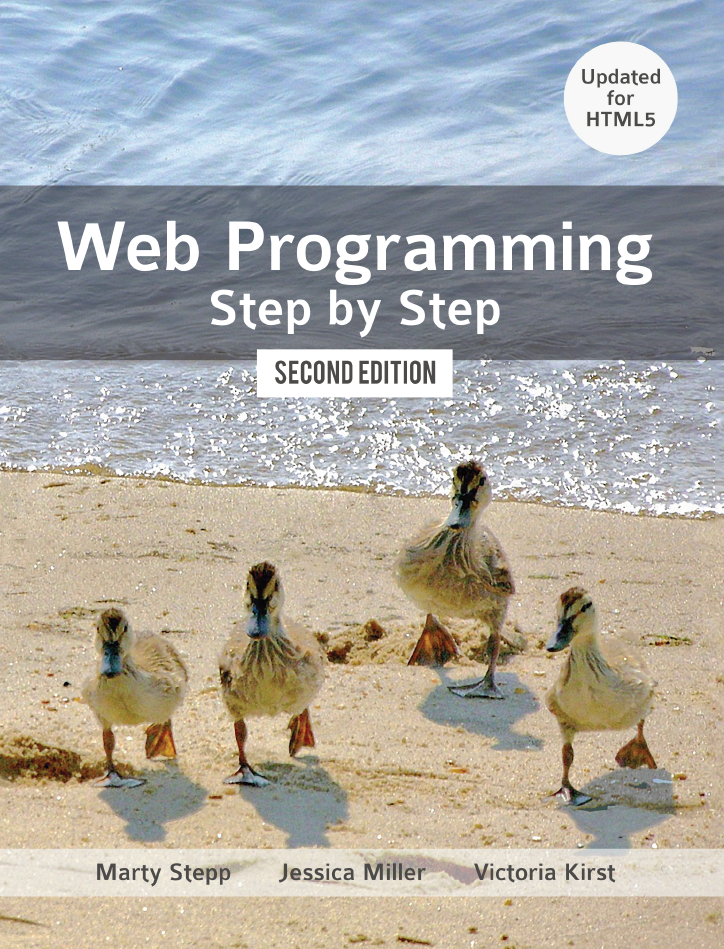Authors' official companion web site


Authors' official companion web site
(Supplements for the second edition are still being updated. Thank you for your patience! See the first edition's Supplements page for additional supplements such as lab handouts and homework assignments.)
The following supplements are available to all instructors and students using the textbook:
Here are some chapters and appendices of additional content that we cut from the book for space, but we'd still like to provide to you for your own educational purposes.
The following page lists every link and reference given at the end of each chapter of the textbook, so that you don't have to type them in to use them.
organized by chapter (last updated June 2, 2012):
split into individual lectures for our web programming course at the University of Washington (last updated June 2, 2012):
div/span) and CSS Box Model
(last updated August 24, 2012)
Right now our newest version of these materials (HTML5/CSS3 version to match 2nd edition of the textbook) has "University of Washington" in its headers and hasn't been scrubbed clean to be generic for any institution. The specs also refer to our own department's resources such as our "Webster" server the students use to do their work. If you don't mind that or want to scrub these out of the documents, you can find them here:
If you want a slightly older version of these specs that is scrubbed clean and branded as "Web Programming Step by Step" to be more generic and reusable, see our Supplements page for the 1st edition of the textbook. "Scrubbed" versions of the newest 2nd edition specs are coming soon.
(Exams are password-protected. Instructors, please contact us for access.)
(last updated August 24, 2012)
(You can import these databases into the MySQL instance on a Linux server using a terminal command such as:
mysql -u root -p < filename.sql
In our Spring 2012 course at UW our TAs taught a weekly extra session where they went into other advanced topics that are not in the textbook or in the regular course. These topics included designing web sites for mobile devices, making sites work in IE, jQuery, programming games in JavaScript with the HTML5 canvas, Node.js, making your own simple message board/blog, CSS3 transformations and animations, and others. The materials were created by teaching assistants Roy McElmurry, Tanner Means, Alex Miller, Mason Remy, and Shiny Yang. Many thanks to the TAs for these great materials!
These materials were used for optional weekly extra sessions about Ruby on Rails in our Spring 2009 course at Washington. The materials were created by teaching assistants Ryan Tucker and Kelly Dunn. Many thanks to Ryan and Kelly for these great materials!
erb)